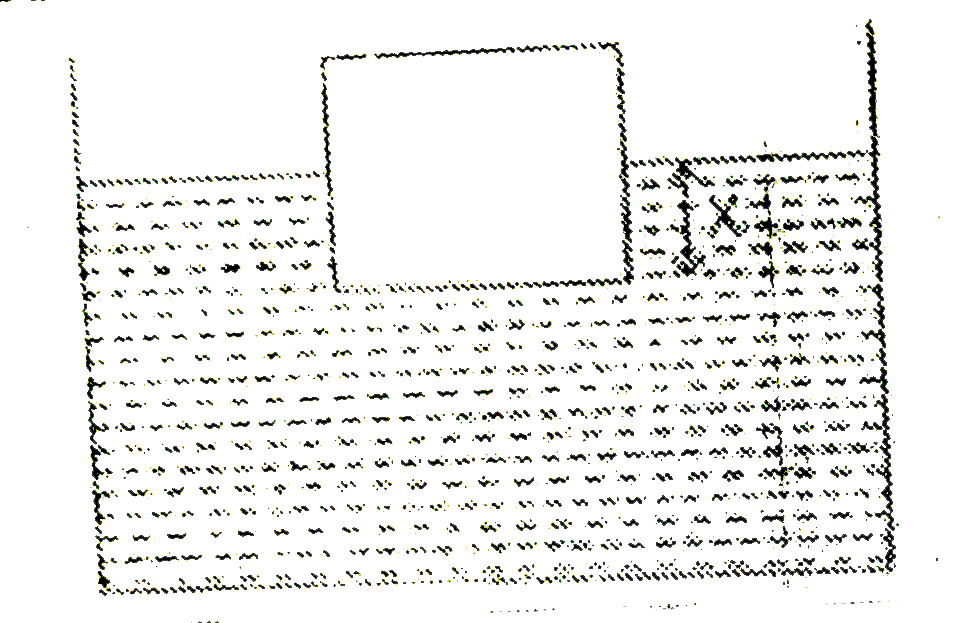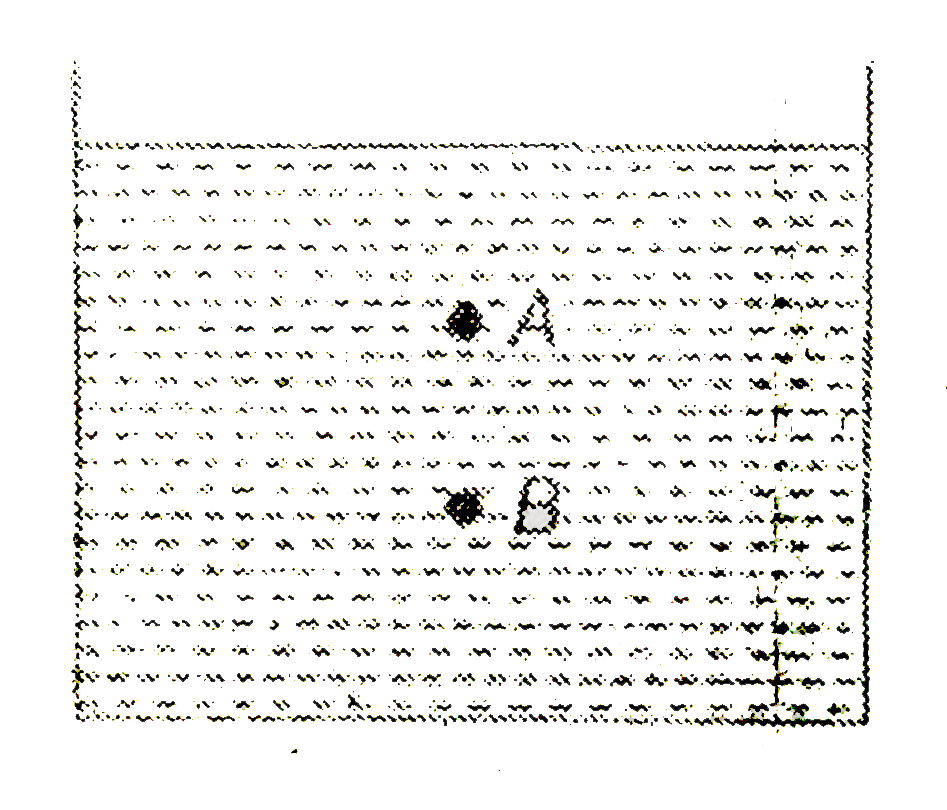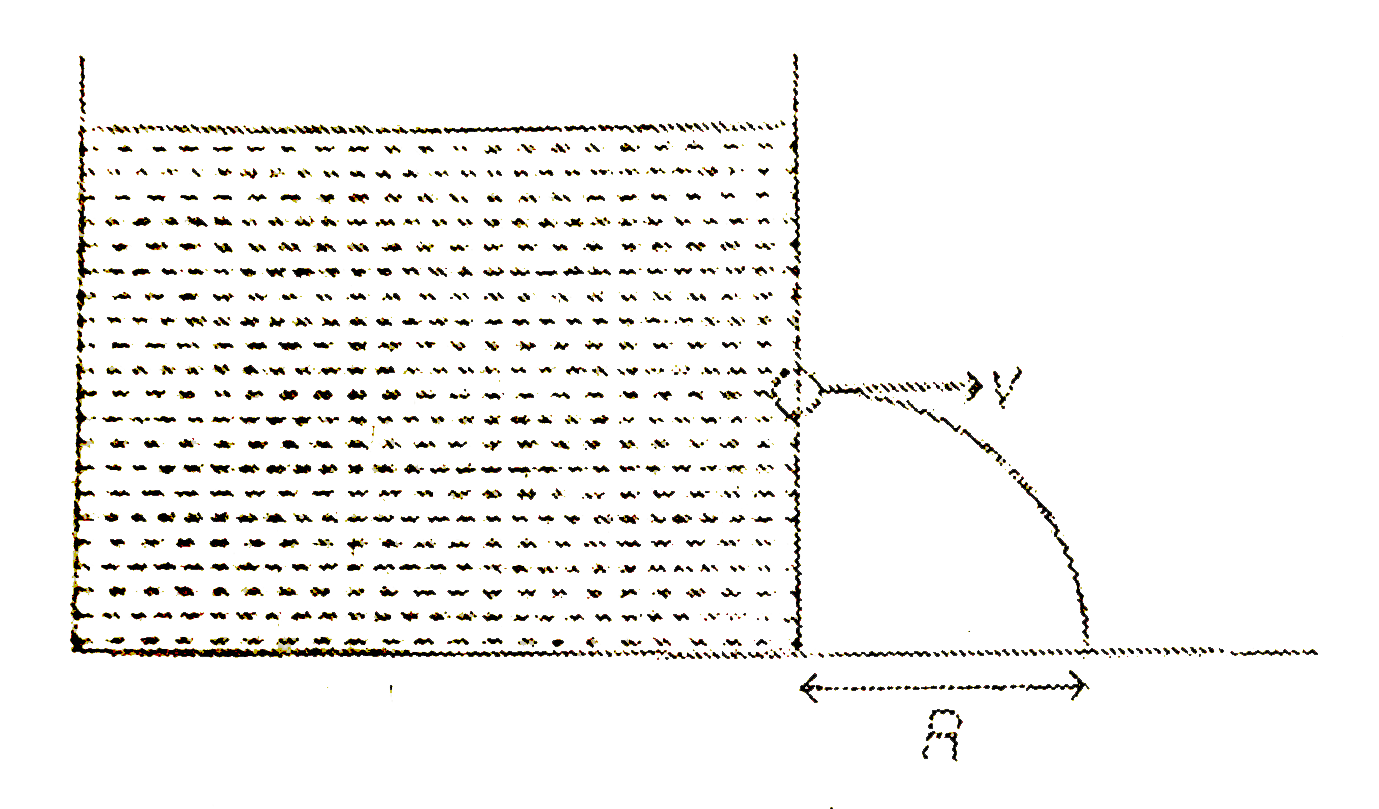A solid is immersed completely in a liquid. The temperature coefficients of volume expansion of solid and the liquid are γ1 and γ2(<γ1). If temperatures of both are increased, then match the following.
∣∣
∣
∣
∣
∣
∣∣Table-1Table-2(A)upthrust on the solid will(P)increase(B)apparent weight of the solid will(Q)decrease(C)fraction of volume immersed in(R)remain samethe liquid if allowed to float will∣∣
∣
∣
∣
∣
∣∣
The correct Answer is:A, B, C
To solve the problem, we need to analyze the effects of temperature changes on a solid immersed in a liquid, considering their coefficients of volume expansion. Let's break it down step by step.
Step 1: Understand the Coefficients of Volume Expansion
The coefficients of volume expansion for the solid and the liquid are given as:
- γ1 for the solid
- γ2 for the liquid, where γ2<γ1
This means that the solid expands more than the liquid when the temperature increases.
Step 2: Analyze the Upthrust (Buoyant Force)
When a solid is immersed in a liquid, it experiences an upthrust (buoyant force) equal to the weight of the liquid displaced by the solid. As the temperature increases:
- The volume of the solid increases more than the volume of the liquid due to the higher coefficient of expansion of the solid.
- Therefore, the volume of liquid displaced increases, leading to an increase in upthrust.
Conclusion for A: The upthrust on the solid will increase.
Step 3: Analyze the Apparent Weight of the Solid
The apparent weight of the solid is given by the actual weight minus the upthrust. Since the upthrust increases (as established in Step 2), the apparent weight will decrease.
Conclusion for B: The apparent weight of the solid will decrease.
Step 4: Analyze the Fraction of Volume Immersed
If the solid is allowed to float, the fraction of its volume that is immersed in the liquid is determined by the balance of weights (the weight of the solid and the upthrust). Since both the solid and the liquid expand, but the solid expands more, the fraction of the volume that is immersed will remain the same.
Conclusion for C: The fraction of volume immersed in the liquid will remain the same.
Step 5: Match the Results with the Given Tables
Now we can match our conclusions with the options provided in the tables:
- A (upthrust on the solid will) matches with P (increase)
- B (apparent weight of the solid will) matches with Q (decrease)
- C (fraction of volume immersed in the liquid if allowed to float will) matches with R (remain same)
Final Matching:
- A → P
- B → Q
- C → R
Summary of the Solution:
- Upthrust on the solid will increase (A → P)
- Apparent weight of the solid will decrease (B → Q)
- Fraction of volume immersed in the liquid will remain the same (C → R)
The coefficients of volume expansion for the solid and the liquid are given as:
- γ1 for the solid
- γ2 for the liquid, where γ2<γ1
When a solid is immersed in a liquid, it experiences an upthrust (buoyant force) equal to the weight of the liquid displaced by the solid. As the temperature increases:
- The volume of the solid increases more than the volume of the liquid due to the higher coefficient of expansion of the solid.
- Therefore, the volume of liquid displaced increases, leading to an increase in upthrust.
The apparent weight of the solid is given by the actual weight minus the upthrust. Since the upthrust increases (as established in Step 2), the apparent weight will decrease.
If the solid is allowed to float, the fraction of its volume that is immersed in the liquid is determined by the balance of weights (the weight of the solid and the upthrust). Since both the solid and the liquid expand, but the solid expands more, the fraction of the volume that is immersed will remain the same.
Now we can match our conclusions with the options provided in the tables:
- B (apparent weight of the solid will) matches with Q (decrease)
- C (fraction of volume immersed in the liquid if allowed to float will) matches with R (remain same)
- A → P
- B → Q
- C → R
- Upthrust on the solid will increase (A → P)
- Apparent weight of the solid will decrease (B → Q)
- Fraction of volume immersed in the liquid will remain the same (C → R)
Topper's Solved these Questions
- BOOK - DC PANDEY ENGLISHCHAPTER - PROPERTIES OF MATTEREXERCISE - Integer8videos
PROPERTIES OF MATTER
- BOOK - DC PANDEY ENGLISHCHAPTER - PROPERTIES OF MATTEREXERCISE - Comprehension32videos
PROPERTIES OF MATTER
- BOOK - DC PANDEY ENGLISHCHAPTER - PROJECTILE MOTIONEXERCISE - Level - 2 Subjective10videos
PROJECTILE MOTION
- BOOK - DC PANDEY ENGLISHCHAPTER - RAY OPTICSEXERCISE - Integer type q.14videos
RAY OPTICS
Similar Questions
Two soap bubbles coalesce to form a single large drop. Match the following.
∣∣ ∣ ∣ ∣ ∣ ∣ ∣ ∣ ∣∣Table-1Table-2(A)Surface energy in the(P)increaseprocess will(B)Temperature of the(Q)decreasedrop will(C)Pressure inside the(R)remain samesoap bubble will∣∣ ∣ ∣ ∣ ∣ ∣ ∣ ∣ ∣∣View SolutionA cube is floating in a liquid as shown in figure. Match the following.

∣∣ ∣ ∣ ∣ ∣ ∣ ∣ ∣ ∣ ∣∣Table-1Table-2(A)If density liquid(P)increasedecreases x will(B)If size of cube is(Q)decreaseincreased x will(C)If the whole system is(R)remain sameaccelerated upwards xwill∣∣ ∣ ∣ ∣ ∣ ∣ ∣ ∣ ∣ ∣∣View SolutionA tube is inverted in a mercury vessel as shown in figure. If pressure P is increased, then

∣∣ ∣ ∣ ∣ ∣ ∣∣Table-1Table-2(A)Height h(P)will increase(B)Pressure at O(Q)will decrease(C)Pressure at 1 cm(R)will remain sameabove O∣∣ ∣ ∣ ∣ ∣ ∣∣View SolutionThe loss of weight of a solid when immersed in a liquid at 0∘C is W0 and at t∘C is 'W'. If cubical coefficient of expansion of the solid and the liquid are γs and γ1 then W=
View SolutionThe loss of weight of a solid when immersed in a liquid at 0∘C is W0 and at t∘C is 'W'. If cubical coefficient of expansion of the solid and the liquid are γs and γ1 then W=
View SolutionThere are two point A and B inside a liquid as shown in figure. Now the vessel starts moving upwards with an acceleration a. Match the following.

∣∣ ∣ ∣ ∣ ∣ ∣ ∣∣Table-1Table-2(A)Pressure at B will(P)increase(B)Pressure difference(Q)decreasebetween A and B will(C)Upthrust on an object(R)remain sameinside the verssel will∣∣ ∣ ∣ ∣ ∣ ∣ ∣∣View SolutionA solid ball is immersed in a liquid. The coefficient of volume expansion of ball and liquid are 3×10−6 per/C and 9×10−6 per ,∘C respectively. Find the percentage change in upthrust when the temperature is increased by 25∘C
View SolutionA solid cube is first floating in a liquid. The coefficient of linear expansion of cube is α and the coefficient of volume expansion of liquid is γ. On increasing the temperature of (liquid + cube) system, the cube will sink if
 View Solution
View SolutionA piece of metal floats on mercury. The coefficient of volume expansion of metal and mercury are γ1andγ2, respectively. if the temperature of both mercury and metal are increased by an amount ΔT, by what factor does the frection of the volume of the metal submerged in mercury changes ?
View SolutionIn the figure shown, velocity of liquid which comes out is v, time of liquid to fall to ground is t and range on ground is R. If the vessel is taken to a mountain, match the following.

∣∣ ∣ ∣ ∣∣Table-1Table-2(A)V(P)will increase(B)t(Q)will decrease(C)R(R)will remain same∣∣ ∣ ∣ ∣∣View Solution

